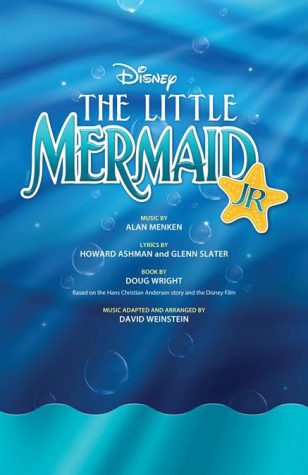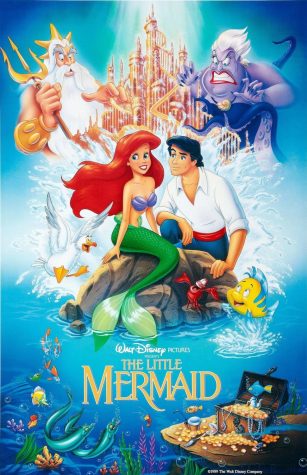“The Little Mermaid”; How Has it Changed Over the Years?
“The Little Mermaid” has been adapted from a book to an animated film, to an on-stage musical, and most recently into a live-action film. The original book by Hans Christian Andersen, was released in 1837 as a fairy tale about a mermaid’s obsession with life on land.
The year 2023, has been a year full of this mermaid tale. The most recent live-action film adaptation of “The Little Mermaid”, was Directed by Rob Marshall and stars Halle Bailey as Ariel. This new addition to “The Little Mermaid” franchise adds diversity into a well-known Disney phenomenon.
The animated film was released by Walt Disney Pictures in 1989, starring Jodi Benson as the voice of Ariel, was the first adaptation of many. The musical film was directed and written by John Musker and Ron Clements, with the storyline and music based on the 1837 book.
Howard Ashman and John Musker produced the 83 minute long film. The film’s success led to a movie franchise, including a sequel released in 2000 and a prequel following in 2008. The

original film was adapted into a stage musical, opening on Broadway in January of 2008.
2023 “The Little Mermaid”
The 2023 live-action version was produced by Marc Platt, Lin-Manuel Miranda, John DeLuca, and Rob Marshall. The iconic marine life characters are adapted in a very naturalistic fashion, showing the skills of animators today making the under-sea story come to life.
This film was released on May 26, 2023 and runs for 135 minutes. The movie premiere occurred at the Dolby Theatre in Los Angeles on May 8, 2023, then in London on May 15, 2023.
This new movie portrayed certain characters’ realities in the ocean and how each character’s persona was shown. The animated film only showed so much reality in the underwater world, but in this we see real creatures and marine biodiversity.
Sebastian and Flounder specifically, were shown very realistically and they show life in the ocean. Flounder, despite the depiction of a chubby, bright blue and yellow in the animation, was shown as a flat and dull fish, but with the same childish personality. Sebastian was the same paranoid, people pleasing but funny crustacean.
Above all other good qualities, my favorite is the broad diversity in the casting of this film. The inclusivity of people of color was very new, especially for a Disney production.
Even though this movie had many strengths, there were also some flaws. Certain scenes that were the most well-known, like Ariel on the rock with the wave crashing behind her, were a bit anticlimactic.
The reality of this version also could have been more negative towards the overall showing. Crustaceans, fish and other marine life don’t always look as extravagant as they seemed in the animation, which could cloud the fantasy that is being portrayed.
Another mishap was the lack of certain songs and the addition of many, in my opinion, unnecessary songs. For Example, Prince Eric, performed a new song, showing the mystery in the ocean, which I believe is shown in the rest of the movie.
This live action version of the classic animation, was well shown with the scenery and the characters underwater. Despite slight changes in certain scenes or plot points, the story was a very well-made film.
Along with multiple new songs, there was at least one major song not included in this version. The song Les Poissons, sung by Chef Louis, was removed from this film, which caused a small discrepancy in the life-on-land vs. underwater differences. Even though this caused some controversy, the additional song that Ariel performed in her mind while she could not speak, was a wonderful addition to the story.
1989 “The Little Mermaid”
The 1989 animation is a classic and has made a well-known Disney franchise. The iconic characters, personalities and scenes, were well developed and created the basis for the future developments.

The mythological creatures depicted in this movie are well shown and give the film the life it needs. The underwater scenes are shown with a certain fantastical aspect with bright colors, unique marine plants and animals, and smooth transitions to the following scenes.
There is little to no critique that I found throughout the original movie. The music, characters, vocals and scenery were all well written and shown. Overall, this movie is a classic fantasy that is a must-watch for all ages. The mermaid-human contact gives light to the fairy-tale story told and read to children.
The original film score was first shown live in this film (not including the original book).
Musical 2012 “The Little Mermaid”
The stage version of “The Little Mermaid”, was adapted by Doug Wright, with songs added by Alan Menken and Glenn Slater. A modified version of the musical was developed in 2012 and is now the main script used for any future productions.
A Local Production “The Little Mermaid Jr.”
In local news, “The Little Mermaid Jr.” was recently produced by Jeffrey Elwood at Rye Junior High School, in Rye, New Hampshire. The show was directed and choreographed by Joshua Goldburg, and had a cast of 37 students, including five Rye Elementary School Student cameos.
In Spring 2023, RJH put on three shows, including one matinee, with the show lasting roughly 2 hours including intermission. Ariel, played by Keira McGowan, had many quick wardrobe changes throughout the show which showed her transition back and forth between human and mermaid form. Haley Brown, the costume manager and designer for the production, handled all of her quick changes, some even being live on-stage.
Backstage, Joan Provencer, the stage manager for Rye School District, designed the set pieces and props, and managed all of the backstage over the course of rehearsals, shows, and strike after closing night. The backstage run crew included a student at RJH and four volunteer students from Portsmouth High School, as well as me, the assistant stage manager for Rye School District.
Even in a middle school environment, the live-theater experience of this classic story was wonderful. From backstage and from the audience, the effect given of

an underwater scene, Ursula, the octopod antagonist’s lair and the land scenes, were extravagant.
The choreography was also well done, each song had well developed and coordinated choreography, which made the performance more appreciable. The story was well followed and well depicted, even in a Junior High School setting.
The interacting life in the show, controlled by actual people, like the water as Ariel is peering above water, were manipulated and moved to show the natural movement of water as well Ursula’s tentacles and her eels, Flotsam and Jetsam, were almost always moving and portraying their characters through their movement.
The set pieces as well as setting contributions like balloons as bubbles, green paper mesh streamers as vines, and many colorful cardboard and wood seaweed pieces, made the story more appealing. The costume pieces for the underwater creatures were very well established and easy to devise what creature each character was playing.
The color palette for each character, (ie. dark greens and purple for Ursula, blues, teals and light purple for Ariel, etc.) added to the mood of each scene and character’s persona.
Physical additions like a bubble machine gave the underwater scenes more character, and a fog machine was used to give Ursula’s lair scenes a more eerie and realistic look.
Although, the struggles on stage for RJH gave me a sense of stress, even for a wonderful production. This was a very fast paced show. The quick scene and costume changes, and movement of the characters from an exit, to an entrance on the other side of the stage, as a different character, were all very quick and likely had not a lot of time available, causing chaos backstage. With Ursula, her large wire petticoat was very hard to move through the slim doorways and wings during her fast exits.
Along with Ursula’s tentacles, each played by a student, they had to keep the mood and continue moving, as well as being careful with where they moved and how fast. Other factors like large set pieces moving, like Ariel’s grotto, and the quick changes going on, backstage was very crowded, chaotic and sometimes hostile.
The same music was used for the original and the stage musical version, with a well-casted set of actors for each song and character. Each character, played by a fitting student at RJH, each song was well-performed and sounded adequate.
Overall, once everything was put together, this was a great show. It was sometimes hard and stressful, but with the help of many crew members, devoted and helpful cast members, the show went on with very few mistakes. The visual contributions of this show was my favorite part, even though I never saw the show from the front.
These three versions all have their own strengths and flaws. In my opinion, each of these adaptations are enjoyable in their own way and situations. A live theater experience is an opportunity I think someone should take whenever possible. On the other hand, it is not always accessible, therefore the classic animation is another route to take when feeling nostalgic. Although the modern version with the diversity that is needed in productions, is another option if you are looking for something more realistic and recent. Either way, enjoy “The Little Mermaid” this summer.






